Showing 1-7 of 7 results
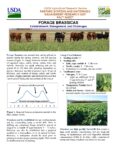
Forage Brassicas
Forage Brassicas are annual crops that can grazed during the spring, summer and fall to extend the grazing season. This fact sheet provides an overview to establish and graze kale, rape, radish, swede and turnip.

Integrated Fly Management for Pastured Cattle
In grazing systems, flies can not only be a nuisance for cattle but can also cause herd health problems like pink eye, and reduce milk production and weight gain. Matt Steiman, livestock manager at Dickinson College Farm worked with Dr. Jason Smith, entomologist and horticultural specialist at Milton Hershey School to develop this fact sheet […]
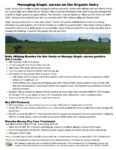
Managing Staph aureus on the Organic Dairy
Staphylococcus aureus is a bacterium that causes mastitis in dairy cattle. Staph aureus mastitis is highly contagious and can easily spread among the herd. Organic dairy farmer Katie Webb Clark conducted a Northeast SARE Farmer Grant project to test milking hygiene and preventative management protocols used in the U.S. and New Zealand, trialed Manuka honey […]
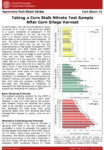
Nutrient Management in Corn Production
The following Cornell University agronomy fact sheets were developed during a 2009 SARE grant to help farmers and educators better evaluate nutrient cycling in corn production, thereby equipping them with information to make improved whole-farm management decisions: Illinois Soil Nitrogen Test for Corn, fact sheet 36 Fine-Tuning Nitrogen Use on Corn, fact sheet 63 Adaptive […]

Crediting Cover Crops and Soil Organic Matter in a Variable Rate Nitrogen Fertilizer Prescription
Crop growth depends on available nitrogen (N) in the soil, much of which comes from mineralization of soil organic matter and other organic residues, such as cover crops. The amount of mineralized N available to a crop depends on several biological and environmental factors such as temperature, moisture, soil texture, the total quantity of organic […]
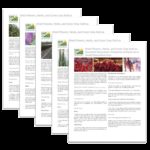
Dried Flowers, Herbs and Cover Crops Sold as Seasonal Decoration
Monica Drazba of Chickadee Creek Farm in Pennington, New Jersey conducted a Northeast SARE Farmer Grant to study the production costs, required labor, marketability, and profitability of growing specialty cut flowers and grasses specifically for wreath production. As a result, she created a series of five fact sheets, below, that contain an analysis of the […]
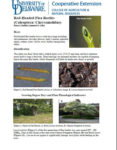
Control of Red-Headed Flea Beetles
Red-headed flea beetles have a wide host range including chrysanthemums, forsythia, hibiscus, lamb’s-quarter, pigweed, zinnia, sedum, asters, Salvia, roses, hollies among many others.